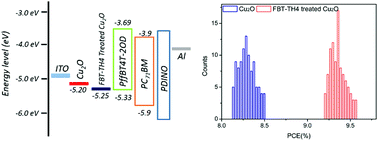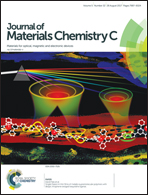Organic solar cells based on a Cu2O/FBT-TH4 anode buffer layer with enhanced power conversion efficiency and ambient stability†
Abstract
An organic–inorganic integrated hole transport layer (HTL) composed of a semicrystalline 5,6-difluorobenzothiadiazole based conjugated polymer FBT-TH4 and cuprous oxide (Cu2O) is successfully incorporated into conventional structured organic solar cells (OSCs). The optimized OSCs show a high power conversion efficiency of up to 9.56% and good stability under ambient conditions. The results highlight the potential application of this organic–inorganic integrated HTL in OSCs.



 Please wait while we load your content...
Please wait while we load your content...